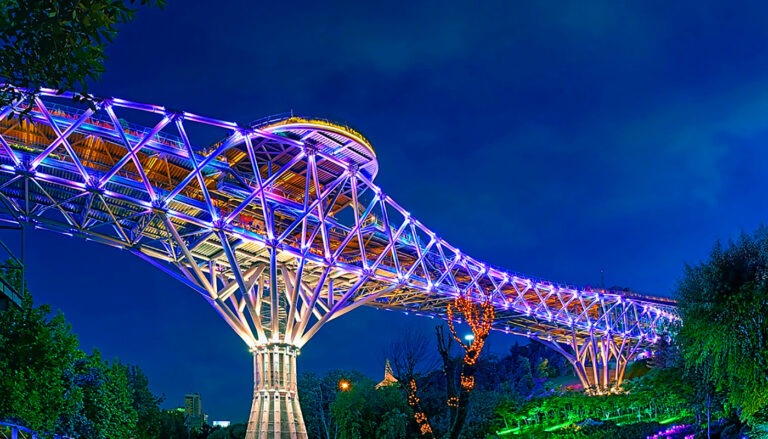
Postmodern architecture in Iran emerged as a creative and flexible approach in response to the limitations of modernist architecture. This architectural style, which gained attention in the 1990s, blends traditional elements with contemporary design patterns. Iranian architects have drawn inspiration from cultural symbols and local forms to create buildings that preserve historical identity while meeting modern lifestyle demands.
Prominent Examples of Postmodern Architecture in Iran
1. Milad Tower (Tehran)
Milad Tower is considered one of the symbols of postmodern architecture in Iran. Its design not only incorporates advanced modern technologies but also features geometric forms inspired by traditional Iranian architecture at its base.
2. Azadi Tower Cultural-Historical Complex (Tehran)
This iconic tower, often seen as a precursor to postmodern architecture in Iran, combines Iranian architectural elements with modern features. The symbolic arches and intricate tile work blend seamlessly with the modern structure.
3. National Library of Iran (Tehran)
This building takes inspiration from ancient Iranian architecture, featuring elements such as grand arches and curved ceilings while meeting modern architectural needs like expansive spaces and ample natural light.
4. Isfahan International Conference Center
The design of this center is an example of postmodern architecture, utilizing glass facades and complex geometric structures inspired by Isfahan’s traditional architecture.
5. Tabiat Bridge (Tehran)
Designed by Leila Araghian, this bridge exemplifies a blend of organic design and elements inspired by Iran’s natural landscape. Its fluid shape and connection between two large parks make it a captivating example of postmodern architecture.
Conclusion
Postmodern architecture in Iran represents an intelligent effort to bridge tradition and modernity. Structures such as Milad Tower and Tabiat Bridge demonstrate how Iranian architects have successfully preserved cultural identity while addressing contemporary architectural demands. The future of Iranian architecture depends on the continued pursuit of this creative and sustainable fusion.


No comments yet.